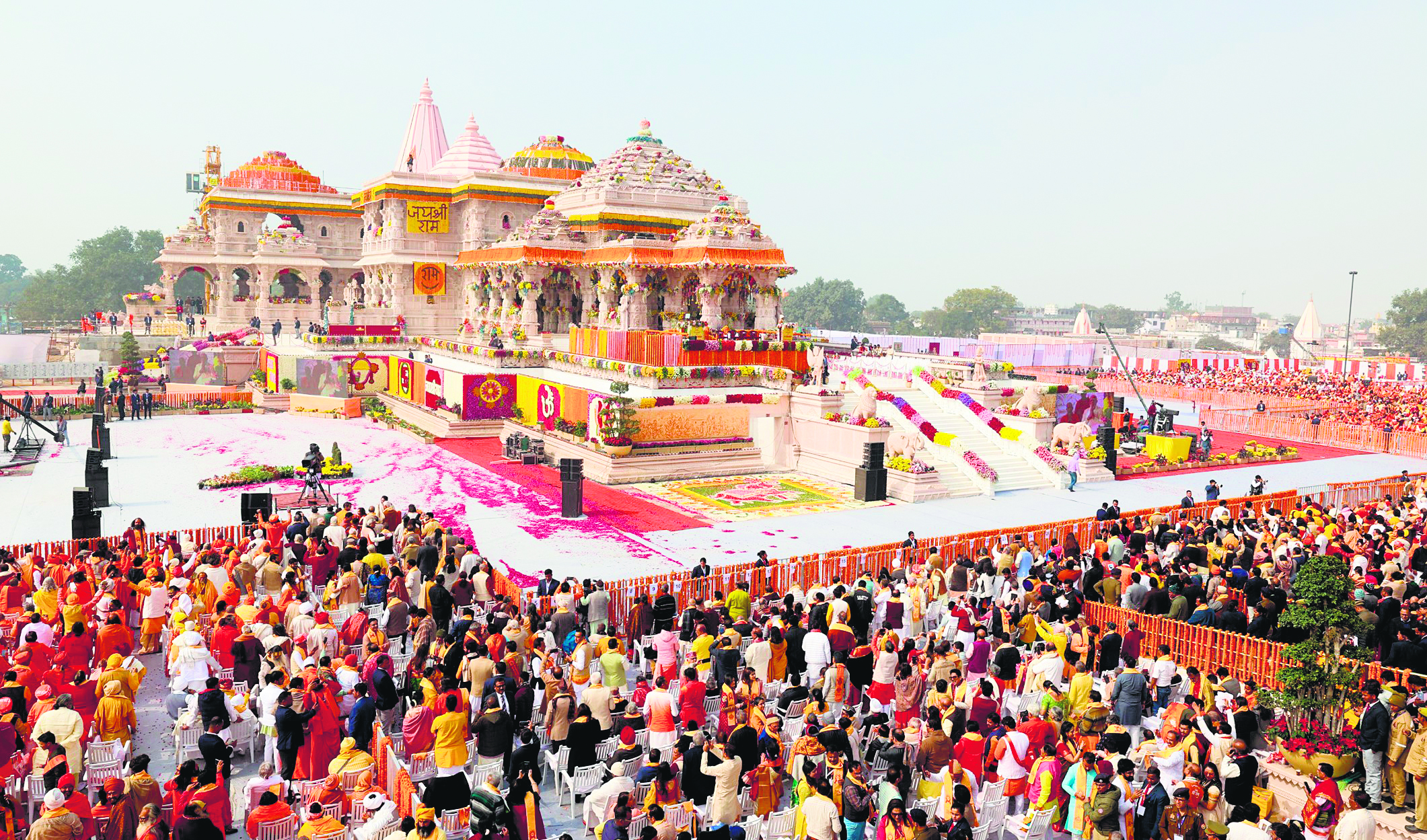


With the high profile and much anticipated opening of the Ram temple in Ayodhya, the consecration of which was carried out by Prime Minister Narendra Modi on Monday, the last and the most magnificent religious corridor that was envisaged by Modi after coming to power in May 2014, stands realised.
The PM’s aim behind developing these religious corridors is to enrich the spiritual journey of devotees while concurrently fostering economic and social advantages for the respective regions.
It was in August 2020 that Modi had laid the foundation stone for the construction of the Ram temple in Ayodhya after the Supreme Court gave its judgment in the decades old dispute in November 2019.
In November 2019, Modi had inaugurated the Kartarpur Corridor which links Gurdwara Darbar Sahib in district Narowal, Pakistan, which is the final resting place of Guru Nanak Dev the most revered figurehead for the Sikh community, to Dera Baba Nanak shrine in Punjab’s Gurdaspur district.
The foundation stone for the same was laid by the PM in November 2018. The said corridor was inaugurated on the 550th birth anniversary of Guru Nanak.
In August 2021, the PM had inaugurated multiple projects in Somnath in Gujarat as a part of the “The Somnath Promenade” and laid the foundation stone for the development of Shree Parvati Temple with a total outlay of ₹30 crore. This will include temple construction in Sompura Salats Style, development of Garbha Griha and Nritya Mandap.
Developed under the Pilgrimage Rejuvenation and Spiritual Heritage Augmentation Drive (PRASHAD) and covering 1.48 km, the Somnath Promenade corridor was built at a cost of Rs 47 crore.
The construction of the said corridor was launched in December 2018 by Union Home Minister Amit Shah, then the national president of the BJP and a trustee of the Shree Somnath Trust.
The promenade begins from Sagar Darshan, the guest house beside the temple, and culminates at the Triveni Sangam — the confluence of the Hiran, Kapila and the mythical Saraswati rivers.
Similarly , the reconstructed Kedarnath Shrine, which is regarded as one of Modi’s dream project —which was ravaged by the 2013 flash floods— was inaugurated in November 2021 with the unveiling of the 13-foot high statue of Guru Adi Shankaracharya at the restored Kedarnath temple. The Shankaracharya statue, weighing 35 tonnes, was built at the seer’s samadhi sthal that was redeveloped after it suffered heavy damage during the 2013 deluge.
In December 2021, the PM had inaugurated the Kashi Vishwanath Corridor at Varanasi that encompasses the ancient Kashi temple devoted to Lord Shiva which is located in Banaras, described by experts as among the oldest cities of the world.
In October 2022, , Prime Minister Modi had inaugurated the Mahakal Corridor devoted to Lord Shiva’s temple Shri Mahakaleshwar Temple (1 of 12 Jyotirlingas) in Ujjain, Madhya Pradesh in Central India.
Once the entire corridor is complete, it is poised to develop Ujjain into a global tourist destination. Ujjain is also a site of the mega religious congregation, Simhasth (Kumbh) which occurs every 12 years.
The BJP government is also developing a Mathura-Vrindavan corridor that will cover the region around the Banke Bihari temple. The temple corridor, to be built on the lines of the Kashi-Vishwanath Temple Corridor, will offer devotees three convenient routes to reach the Krishna temple. The construction of the historic corridor will cost ₹ 262 crore which will be funded by the UP government. To be built over 5 acres, over 10,000 devotees can stay inside the complex at a time. Devotees will be able reach the temple through three routes — from Jugalghat, Vidyapeeth intersection and from the Jadoun parking. The corridor, which will surround the temple, will have two floors. The ground floor of the entrance complex will be spread over 11,300 square meters.
In the lead-up to the May 2024 polls, highlighting the transformative impact of religious corridors across the nation on the economic and social dynamics of their respective regions will be a key part of BJP’s electoral strategy.